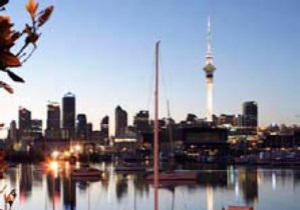
by Miriam Bell

This week has seen a flood of new data which highlights the Auckland market’s dramatic, and ongoing, slowdown.
QV’s latest House Price Index suggested the region’s market has stalled with the slowest rate of annual value growth in over five years in the year to July.
Realestate.co.nz’s July data showed new listings have fallen and the number of houses on the market is up, while Barfoot & Thompson reported a big decrease in sales which made July the quietest in seven years.
All three sets of data had Auckland’s prices and values flatlining, if not falling.
Both QV’s spokesperson, Andrea Rush, and Barfoot & Thompson’s managing director, Peter Thompson, pointed to the effect of winter and the looming election as possible causes for the cooler market.
But the quiet conditions, and the data recording them, have led many to ask whether the Auckland market is significantly reversing from its recently giddy heights.
There is one major thorn in the side of this argument – and that is the Super City’s dire supply issues.
Auckland is generally estimated to have a shortage of around 35,000 homes and needs to have 11,000 to 12,000 built each year for supply to keep pace with demand.
Yet the latest dwelling consent data showed that the number of Auckland consents issued in June was down on the previous month and well off a peak in November.
BNZ chief economist Tony Alexander said that any growth in consents was fairly minimal and the chances of any reduction in the supply shortage over the coming year is minimal.
Further, the shortage got worse last year because extra digging into the data showed only 6,200 houses were actually built in Auckland – not the originally reported 7,200, he said.
“Given that Auckland’s population has grown over 45,000 in that time period and housing such growth requires at least 15,000 dwellings, the shortage has worsened by 9,000 units.
“The price implications remain as obvious now as they have been since 2008, though now more in terms of supporting current prices with an upside bias further out rather than clearly boosting them.”
ASB economist Kim Mundy agreed.
She said they expect housing activity to remain subdued over 2017, but strong population growth and sluggish housing construction will support demand and provide a floor under house prices.
For independent property strategist Leonie Freeman, Auckland’s housing supply shortage is a crisis which affects everyone and must be addressed urgently.
To that end, she convened an Auckland Housing Summit earlier this week where speakers were united in their view that, without further action, the city’s housing-related problems, including supply and prices, would get worse.
It was also agreed that to address the problem a collaborative approach across different industries was required, along with a clear vision and an embrace of disruptive technologies and approaches.
The upshot is that, until real progress on the supply shortage is made, it is unlikely the Auckland market will see a major reversal of direction.
However, commentators agree the currently cooler market does represent a return to a more balanced market – and does offer some opportunities for buyers who have finance.
Read more:
Return to traditional market – B&T
Shortfall to get worse before it gets better
| « Return to traditional market – B&T | 10 future boom towns » |
Special Offers
No comments yet
Sign In to add your comment

© Copyright 1997-2024 Tarawera Publishing Ltd. All Rights Reserved